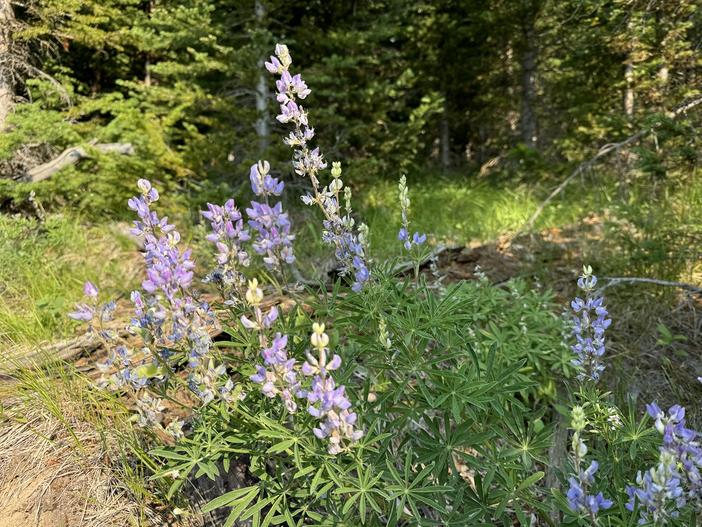Silky Lupine
(Lupinus sericeus)
Silky Lupine (Lupinus sericeus)
/
/

Matt Lavin
CC BY-SA 2.0
Image By:
Matt Lavin
Recorded By:
Copyright:
CC BY-SA 2.0
Copyright Notice:
Photo by: Matt Lavin | License Type: CC BY-SA 2.0 | License URL: https://creativecommons.org/licenses/by-sa/2.0/ | Uploader: Matt Lavin | Publisher: Flickr



































Estimated Native Range
Summary
Lupinus sericeus, commonly known as Silky Lupine, is a deciduous perennial herb native to open woodlands, grassy slopes, and meadows in the Intermountain West of the USA and Western Canada. This species typically produces erect stems from a woody caudex and a deep root system, reaching up to 50 centimeters (20 inches) in height. The stems may be simple or branched. The inflorescence is a raceme of many flowers, which are most commonly found in shades of purple or blue, though they can occasionally be white or yellowish. The flowers are notable for the hairy back side of the banner petal, adding a textural element to the plant’s appearance. The fruit is a hairy legume pod, which can be up to 3 centimeters (1.2 inches) long and contains up to 7 seeds.
Silky Lupine is valued for its showy flowers, which bloom from late spring to early summer, and its ability to thrive with minimal care. It is often used in native plant gardens, wildflower meadows, and for habitat restoration projects due to its nitrogen-fixing abilities, which improve soil fertility. In cultivation, it prefers full sun exposure and tolerates drought conditions well, requiring low amounts of water. It is best suited to soils with fast or medium drainage. While it is generally low-maintenance, it can be susceptible to fungal diseases if conditions are too moist. Gardeners should also be aware that all parts of the plant are toxic if ingested.CC BY-SA 4.0
Silky Lupine is valued for its showy flowers, which bloom from late spring to early summer, and its ability to thrive with minimal care. It is often used in native plant gardens, wildflower meadows, and for habitat restoration projects due to its nitrogen-fixing abilities, which improve soil fertility. In cultivation, it prefers full sun exposure and tolerates drought conditions well, requiring low amounts of water. It is best suited to soils with fast or medium drainage. While it is generally low-maintenance, it can be susceptible to fungal diseases if conditions are too moist. Gardeners should also be aware that all parts of the plant are toxic if ingested.CC BY-SA 4.0
Plant Description
- Plant Type: Herb
- Height: 1.5-2.5 feet
- Width: 1-2 feet
- Growth Rate: Rapid
- Flower Color: Blue, Purple, White
- Flowering Season: Spring, Summer
- Leaf Retention: Deciduous
Growth Requirements
- Sun: Full Sun
- Water: Medium, High
- Drainage: Fast, Medium
Common Uses
Bee Garden, Bird Garden, Butterfly Garden, Deer Resistant, Drought Tolerant, Fragrant, Hummingbird Garden, Low Maintenance, Rabbit Resistant, Showy Flowers
Natural Habitat
Native to open woodlands, grassy slopes, and meadows in the Intermountain West of the USA and Western Canada
Other Names
Common Names: Pursh’s Lupine , Pursh’s Silky Lupine , Lupin Soyeux
Scientific Names: Lupinus sericeus , Lupinus ornatus , Lupinus sericeus var. sericeus , Lupinus sericeus var. fikeranus , Lupinus fikeranus , Lupinus aeger-ovium , Lupinus puroviridus , Lupinus sericeus f. sericeus
GBIF Accepted Name: Lupinus sericeus Pursh